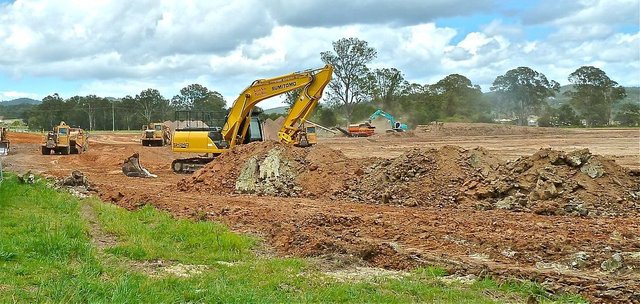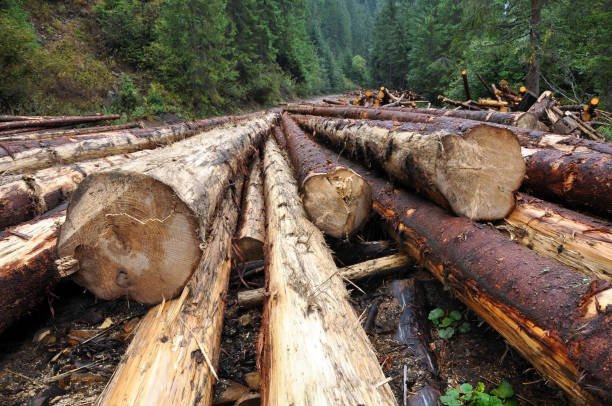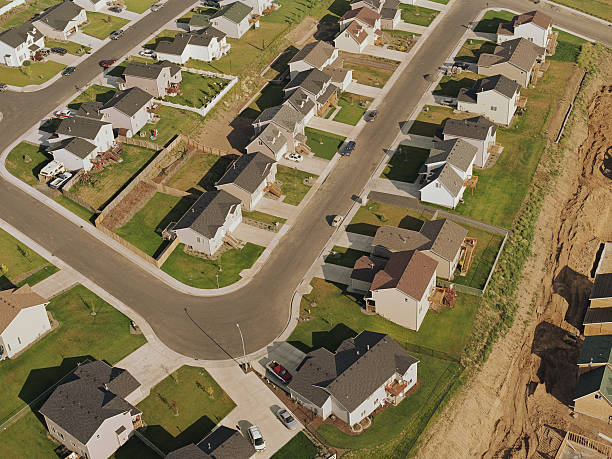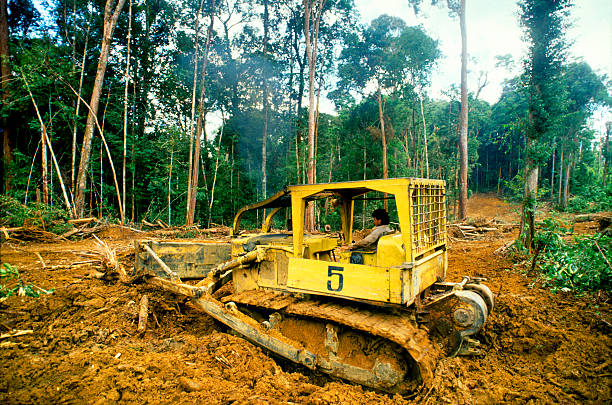Land Development Techniques
Land development include all activities carried out with machine on the land in order to put the land In a desired form required by man. These activities include clearing, forming, grading, shaping and levelling carried out on a portion of land. Land development process starts with land clearing and ends with the establishment or erection of structures.

Land forming is defined as the removal and redistribution of the earth's materials from one side of the field to another thereby enabling the land meet the design or grade requirements.
Land development process is usually carried out in order to;
- Control the flow of water in the field particularly in surface irrigation systems.
- To reduce soil losses due to erosion.
- To provide an effective surface drainage system.
- To meet the irrigation and drainage requirements of a particular land surface
- To install grade requirements for erosion control and soil conservation.
- To remove small depression that may not allow even spread of water.
Rough grading is defined as the removal of all irregularities such as moulds, dunes, sands and ridges as well as filling of the various pits, depressions and gullies at a particular site.
Similarly, Land smoothing is the removal of all irregularities created during land levelling operations which provides a plane surface with cut - fill ratio as one.
Operations Carried out During Land Development Process

source
The operations carried out during land development process are;
Site investigation or reconnaissance :
The land or the site to be developed must be inspected. This the first hand information on the density of the vegetation and the nature of the terrain. It also helps in the selection of an appropriate land clearing equipment for the job at hand.
Land Surveying /mapping :
This is done in order to establish the site boundaries and the field layouts as well as the point elevations and slope of a piece of land.
Mapping out the land :
Lands are mapped out for the establishment of the land contours and the determination of the topography of an area.
Clearing of the land :
This is the removal of all vegetations/grasses on a site using the appropriate machine.
Stumping Operations :
This is the removal of all felled trees, bushes, vegetations, trashs and roots using stumpers, root rakers and takes.
Grubbing :
This is the removal of stumps, stones and woods embedded with the earth during land clearing operation.
Disposal Methods for Vegetation

The felling of the trees and vegetations can not be said to be complete unless all the trashes, brushes, trees are removed from the site. The removal of these materials provides space required for developmental activities. There are many methods of disposing off the vegetations. The following methods can be adopted;
The removal of the trees and stumps with machine by uprooting and removing the materials to the area where they can be disposed off by burning.
Sharing the vegetation while on the ground with sharp cutting blades and pilling them for burning.
Knocking down the vegetation and crushing them before actions.
Allowing the materials to dry and decay
Use of explosives and chemicals that can destroy the vegetations when applied. And so on.
The procurement of explosives for land clearing is expensive and may not be effective. Using the explosives, the leaves dry up while the trunks remain in position. For an effective land clearing operations, all the parts of the tree and vegetation must be removed entirely.
Power Requirements of Machines for Land Clearing.
The bulldozer blades, however, remains the best implement for the land clearing and subsequent development. The land clearing machines use heat engines that provide power for the clearing and tree felling operations. The power produced by the engine is transferred to the sharp cutting edges thereby energizing the blade. The power at the blade is used to cut and overcome the root force holding the tree in position. The blade of the machine has the capacity to overpower the trees with massive root force below the ground level. If the root force holding the tree in position (rf) is greater than the power on the blade of the machine, the tree will not fell. Similarly, if the power at the blade is greater than the root force holding the trees in position (rf) , then the tree is forced to fall and away from the operators position.
Types of Blades used for Land Clearing
The clearing machines are usually equipped with a stinger or a wedge - like projector. The stinger and the wedge - like projector split the trees in one or more parts before the trees are felled.
The type of blades used are :
- The angle blade and
- The V - shaped blade.
The angle blade :
This is a versatile instrument that can fell, cut, pile, stump and ditch any size of tree trunk. The angle blade is attached to the machine at an angle of 30°. It is operated and controlled by hydraulic cable.
The V - shaped blade :
The V - shaped blade is equipped with a heavy duty splitter which has an angled serrated cutting edges with a brush rack. Both the V - blade and the angle blade use the hydraulic actions. These machines are provided with cap guides that protect the operator against the falling trees.
Advantages and Disadvantages of Mechanical Land clearing operations
Advantages :
- It takes less time to prepare a piece of land for development purposes.
- It prepares a large expanse of land for agricultural production and constructions.
- It encourages large scale farming.
- The activities are carried out on schedules.
Disadvantages
- It compacts the soil.
- It requires large quantities of diesel (fuel)
- It requires large capital outlay.
- It requires expertise in handling.
- It rearranges the soil and creates hardpans.
- The breakdown of machines may delay operations.
The Effects of Land Clearing Operation on the Environment
The effects of land clearing operation on the environment are as follows;
- It causes erosion
- It pollutes the low land areas ( stream, rivers, lakes) due to silting actions.
- It removes vegetations thereby encouraging wind erosions.
- The dust generated pollutes the environment.
- It can lead to land degradation if not properly managed.
References
The Atlantic Committee on Agricultural Engineering (A.C.A.E.)
Mechanical Vegetation Solution

If you write STEM (Science, Technology, Engineering, and Mathematics) related posts, consider joining #steemSTEM on steemit chat or discord here. If you are from Nigeria, you may want to include the #stemng tag in your post. You can visit this blog by @stemng for more details. You can also check this blog post by @steemstem here and this guidelines here for help on how to be a member of @steemstem.



